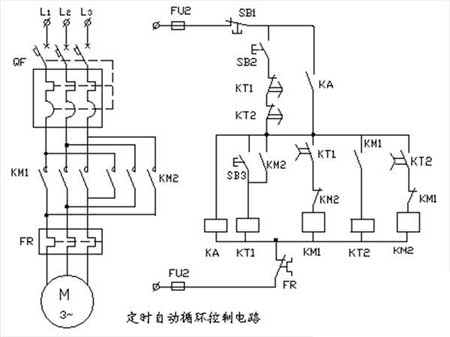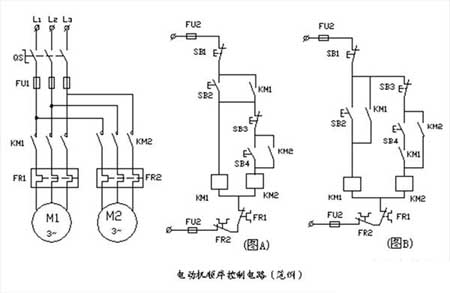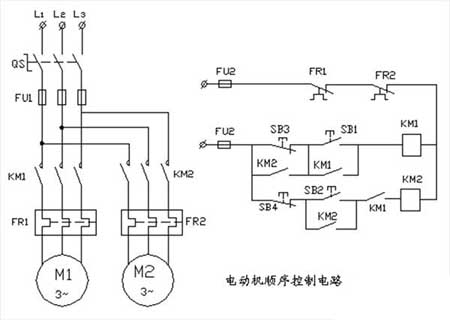Motor Overload protection circuit diagram design of leakage protector
As shown in the figure below, the overvoltage signal of the mains is drawn from the R3 and RP voltage divider circuits. After the trigger diode is turned on, the micro-trigger thyristor is turned on to make the tripper act. The overload protection of the leakage protector is completed by the remnant winding coil Lg using the residual current principle.

The normally open contact of the reed switch is connected to the test button SB; The coil Lg is connected in series on the winding W1. When the load current exceeds the set value (the overload setting value is determined by the wire diameter and the number of turns of the coil), the normally open contact of the reed switch is closed due to magnetization. Equivalent to the test button SB is closed, the primary side of the transformer T generates residual current, the secondary side signal triggers VTH to conduct, the trip unit acts, and the power is cut off quickly. The electrical principle is the same as that of the leakage and overvoltage protection described above. The circuit shown in the figure below completely protects against overvoltage, overcurrent, overload, and leakage.
As shown in the figure, it is an overload protection circuit called current limiting. In the circuit. VT3-VT6 constitutes a composite complementary symmetrical power amplifier output stage circuit, ri, vr2, VD7, VD8 and Rs, Ma, etc. constitute an overload protection circuit, wherein R and R9 are sampling resistors, and the resistance value is small.


Adjust RP. When the motor is in normal operation, the voltage applied to the voltage regulator vsl is lower than its breakdown voltage, the transistor VTI is turned off, the VTz is turned on, the intermediate relay KA is pulled, the normally open contact is closed, and the contactor KM is self-locking.
When the W phase is powered off, the contactor KM is released and the motor is stopped; when the U phase or the V phase is powered off, the VS1 is broken down and the transistor VTI is turned on. When VT2 is cut off, KA and KM are successively de-energized and the motor stops. When the motor is overloaded, Vsl breaks down and also acts as a shutdown protection.

The normally open contact of the reed switch is connected to the test button SB; The coil Lg is connected in series on the winding W1. When the load current exceeds the set value (the overload setting value is determined by the wire diameter and the number of turns of the coil), the normally open contact of the reed switch is closed due to magnetization. Equivalent to the test button SB is closed, the primary side of the transformer T generates residual current, the secondary side signal triggers VTH to conduct, the trip unit acts, and the power is cut off quickly. The electrical principle is the same as that of the leakage and overvoltage protection described above. The circuit shown in the figure below completely protects against overvoltage, overcurrent, overload, and leakage.
As shown in the figure, it is an overload protection circuit called current limiting. In the circuit. VT3-VT6 constitutes a composite complementary symmetrical power amplifier output stage circuit, ri, vr2, VD7, VD8 and Rs, Ma, etc. constitute an overload protection circuit, wherein R and R9 are sampling resistors, and the resistance value is small.

Overload protection circuit diagram design (3)
The circuit has phase failure protection and overload protection. The circuit does not use a power transformer, which can reduce the size of the device.
The circuit has phase failure protection and overload protection. The circuit does not use a power transformer, which can reduce the size of the device.

When the W phase is powered off, the contactor KM is released and the motor is stopped; when the U phase or the V phase is powered off, the VS1 is broken down and the transistor VTI is turned on. When VT2 is cut off, KA and KM are successively de-energized and the motor stops. When the motor is overloaded, Vsl breaks down and also acts as a shutdown protection.





